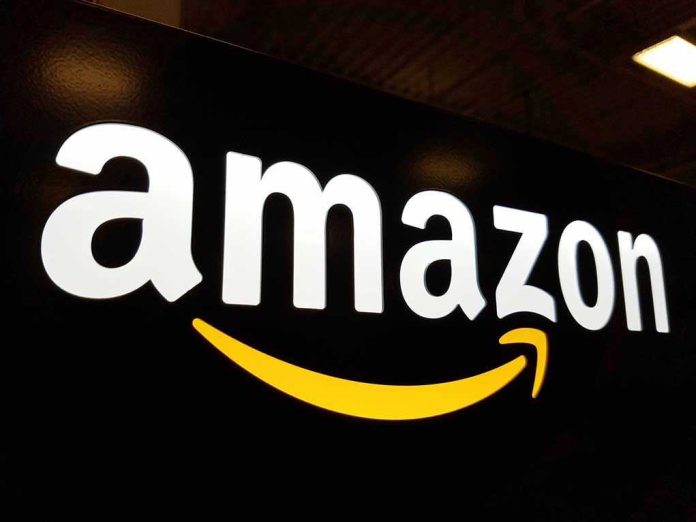
When even the world’s largest online retailer teams up with America’s oldest advocacy group for seniors to shout “enough!” about rampant scams, you know the problem has gotten so big that not even the woke crowd can ignore it anymore.
At a Glance
- AARP and Amazon have joined forces to fight the explosion of AI-powered scams targeting Americans, especially older adults.
- Their new “Guide for Brands” urges every company to finally get serious about consumer protection and stop playing whack-a-mole with fraudsters.
- Despite years of public campaigns, the government’s own data shows most scam victims never even report these crimes, out of fear or embarrassment.
- Brands are now being called out—publicly—to put real muscle behind protecting customers, not just lip service.
The Scammers Are Winning, So AARP and Amazon Call for Backup
Consumer fraud used to be the stuff of suspicious phone calls and bad emails. Now, thanks to the endless advances in technology and the rise of artificial intelligence, scams have become a full-blown epidemic—so much so that even Amazon, which spends billions on security, is getting hammered. Enter AARP, the group that’s been warning Americans for years about grandkid scams and IRS imposters, and now finds itself fielding over 100,000 calls a year from victims. Together, they announced a joint “Guide for Brands” at NRF PROTECT 2025, a retail security conference, with a message that’s as subtle as a sledgehammer: It’s time for every brand in America to get serious about fighting fraud, or get out of the way.
Brands are being told point-blank that the era of wishful thinking and half-hearted “awareness campaigns” is over. The new guide lays out the basics: create centralized fraud hubs on your website, train support teams to treat victims with empathy instead of suspicion, and communicate real-time scam alerts. It’s a classic case of “do your job”—something that doesn’t come easy to a lot of companies these days, especially the ones busy virtue-signaling instead of protecting their customers. And with the Department of Justice admitting that only 15 percent of scam victims even bother reporting the crime, mainly out of shame, it’s not hard to see why scammers are thriving while the so-called “support systems” are asleep at the wheel.
Victims Left on Their Own as Scams Get Smarter
Scammers have leveled up. Forget the Nigerian prince—today’s crooks use deepfake audio, AI chatbots, and hijacked brand names to steal money and personal data faster than the government can print stimulus checks. The result? AARP’s Fraud Watch Network is overwhelmed, and Amazon’s customer service reps are dealing with callers who’ve lost everything from retirement savings to their faith in humanity. The guide’s release at NRF PROTECT 2025 is a not-so-gentle nudge to every major brand: stop treating fraud victims as an inconvenience and start acting like you care.
Statements from AARP’s Amy Nofziger and Amazon’s Abigail Bishop drove the point home: everyone is a target, and the emotional fallout is real. They want brands to replace judgment with support, and to make scam prevention as central as any diversity initiative or “sustainability” press release. If only the same urgency given to the latest political crisis or social media trend was applied to defending everyday Americans from fraudsters, maybe we wouldn’t be in this mess.
Industry-Wide Action or Yet Another Woke Checklist?
On paper, the AARP-Amazon partnership is the model of what happens when industries come together for a cause that actually matters—protecting the people who built this country from being fleeced by criminals. Early signs suggest the guide is being pushed hard across the retail sector, but the real test is whether brands will step up or just add it to the growing stack of “best practices” that nobody follows. Experts warn that implementation and enforcement, especially among smaller companies, will be the sticking points. After all, it’s easier to change your logo for Pride Month than to overhaul your fraud response infrastructure.
In the short run, expect a bump in awareness and maybe even a few companies getting their act together. In the long run, if this guide becomes the gold standard, we might see fewer scam victims and more public trust in online commerce. But as always, the devil is in the details—and in a world where government oversight is more focused on policing pronouns than protecting wallets, the burden falls (again) on private industry and vigilant consumers.
A Real Solution or Just the Next PR Stunt?
The AARP-Amazon collaboration is a much-needed step in the right direction, but let’s not kid ourselves: it shouldn’t have taken a crisis of this scale to get brands to put Americans first. As fraudsters become more sophisticated, industry-wide cooperation is no longer a “nice to have”—it’s a matter of survival for consumers and brands alike. Whether this new guide actually gets adopted or just gathers dust alongside other well-meaning campaigns remains to be seen. If the past few years have taught us anything, it’s that true protection won’t come from government panels or corporate press releases, but from relentless public pressure and a refusal to settle for less than real accountability.














